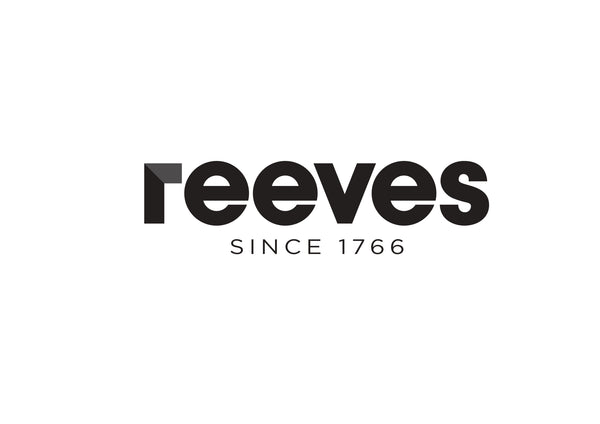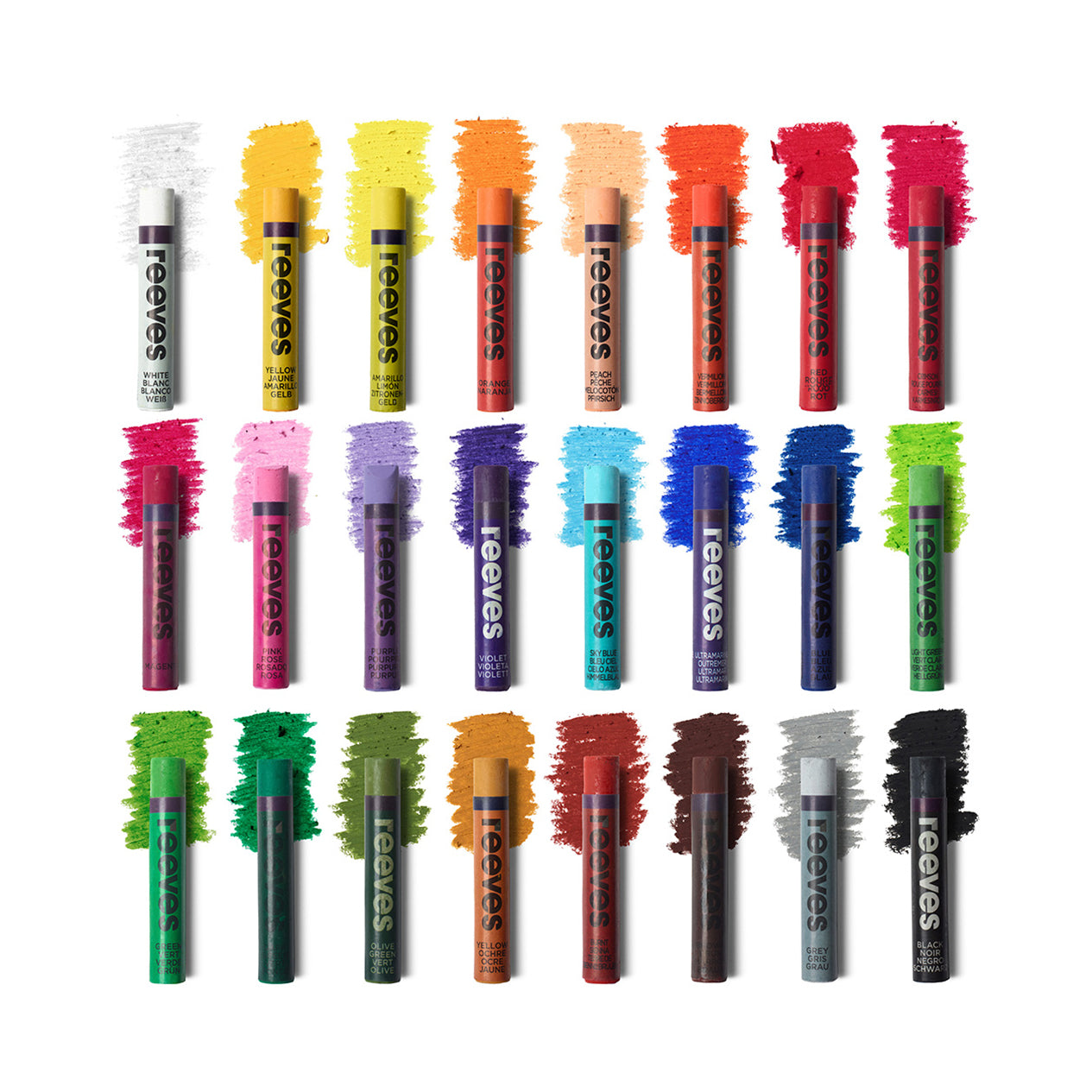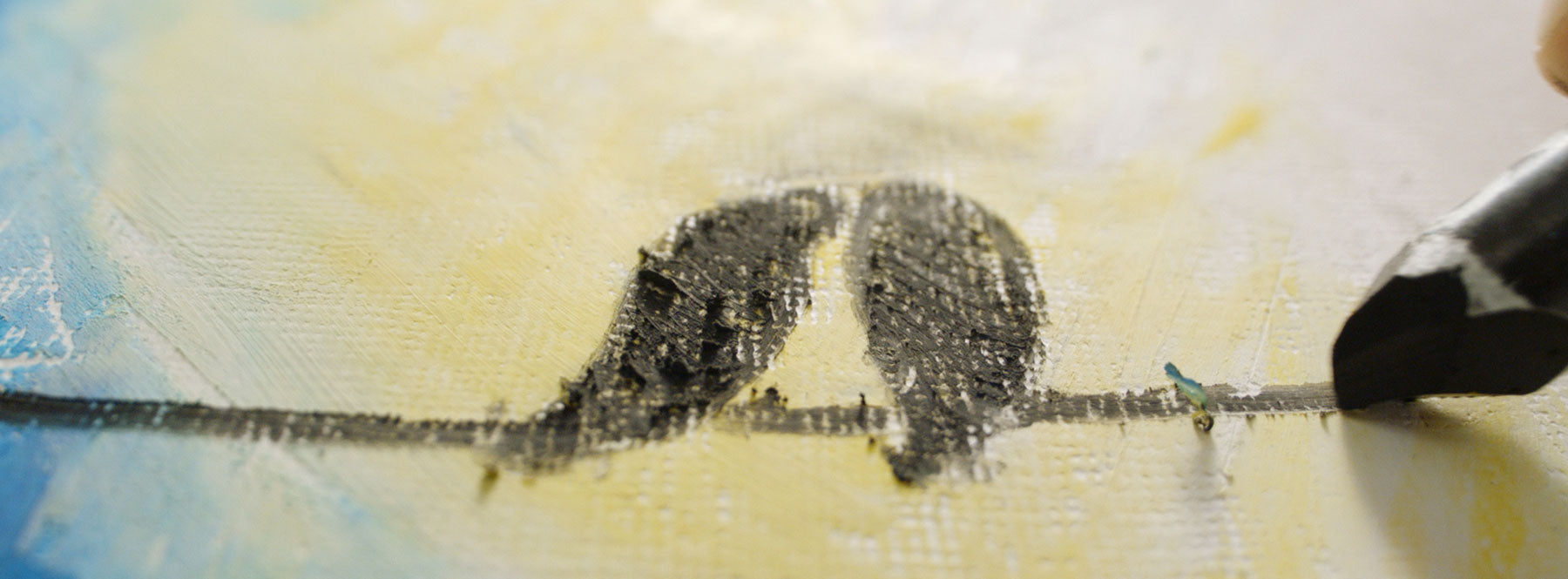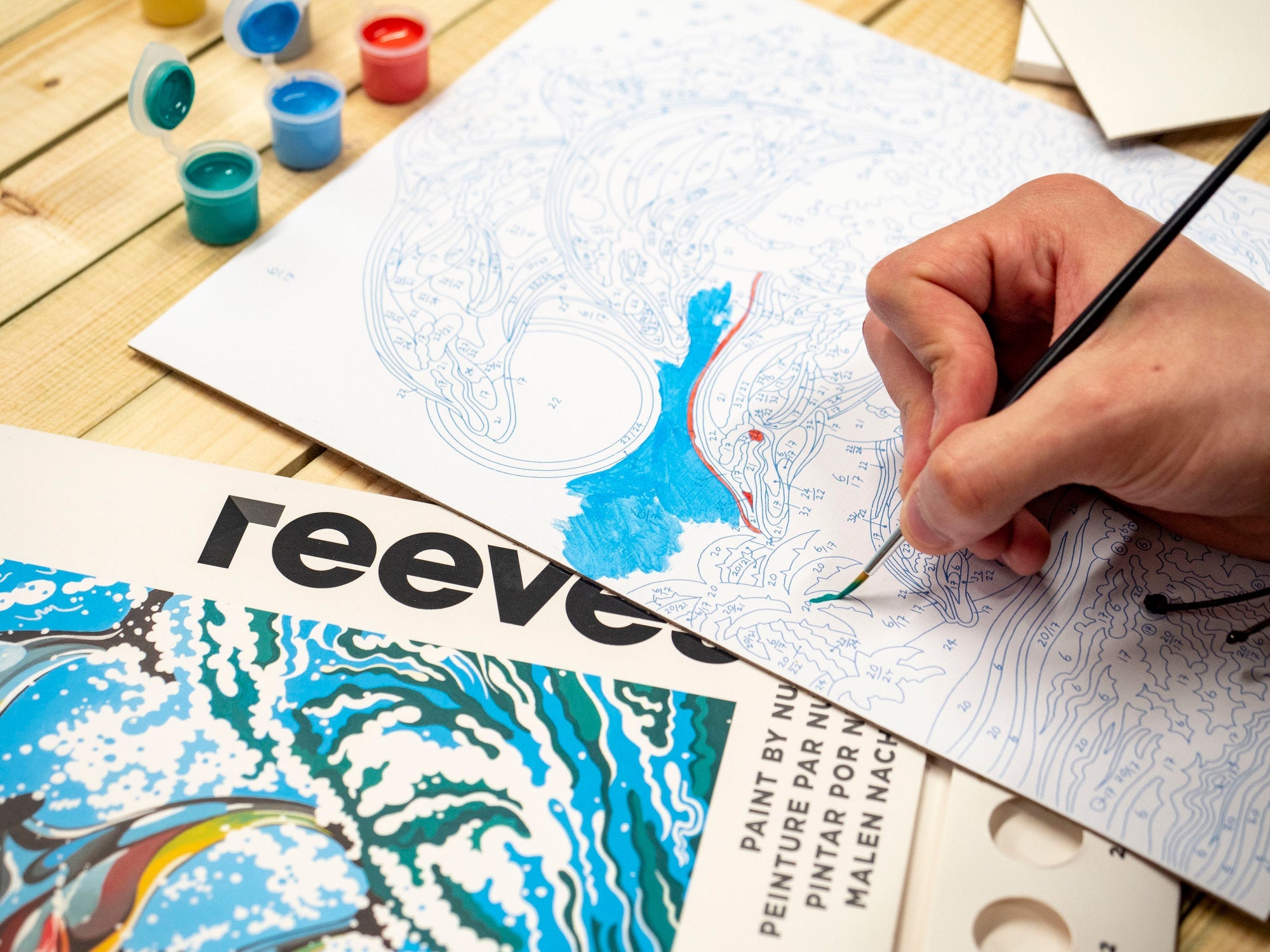Oil Pastel Techniques
When drawing with either wet or dry oil pastels there are several techniques you can use to create striking effects.
Pastels blend well, and can be done either by mixing them in your palette before applying them to paper, or by layering colours over each other on the paper. Each different methods produce different textures and effects - so try them all!
To blend pastels colours on your palette, cut off small pieces of the colours you
want to mix and use a palette knife or paint brush to mix them into a thick paste that you can then draw with.
To blend directly onto paper, apply a layer of one colour, then the colour you want to mix it with on top. Blend the two layers using a palette knife, paint brush or even your fingers! Mixing directly on a painting surface is usually
better for larger areas as you can easily build up layers of pastels gradually to achieve the colour you want.
Do you need tools to blend pastels?
You don't need any special tools to blend pastel colours. If your blend looks streaky, or, lumpy or uneven, this usually happens when the surface is unsuitable - not because of the way the colours were mixed.
Some people prefer to blend pastel colours with just their hands - dabbing and splotching layers of colour with their fingers. If you prefer to keep your hands paint free, you can use a cloth or paper towel instead. Using your hands may give you more control and better coverage, but you might prefer the texture that a cloth or towel creates. You won't know until you try!
Heavy Pressure Blending
Heavy Pressure Blending is a technique that involves applying more pressure when drawing to apply more pastel to the drawing surface - followed by more colours. This will leave you with a stunning bold, intermixed affect.
Oil Blending
Oil blending creates a smoother finish and allows you more control over the final colour. Add baby oil (or any mineral oil) to a cotton bud or cotton ball, and dab it onto your oil pastel drawing. Smear and smooth out your colours and control which direction you want the blend to go.
Stippling Oil Pastels
Another popular pastel drawing technique is stippling. For a stipple blend, colour is applied in layers of dots using short, uneven strokes that create a shading effect. Stippling works really well and is an easy technique to master.
Scumbling Pastels
Scumbling is another blending technique that builds layers of colour directly onto the paper. Layers of colour are added over each other until the desired look and consistency are achieved. With scumbling the pastel is applied in scribbles or swirls. This creates a striking effect with the layer of colour underneath peeking through - adding depth to the colours.
Feathering
Feathering helps objects blend by smoothing the edges so they look like they belong.
To feather a drawing, apply layers of short lines, similar to cross hatching, in a linear fashion along the edges you want to soften.



